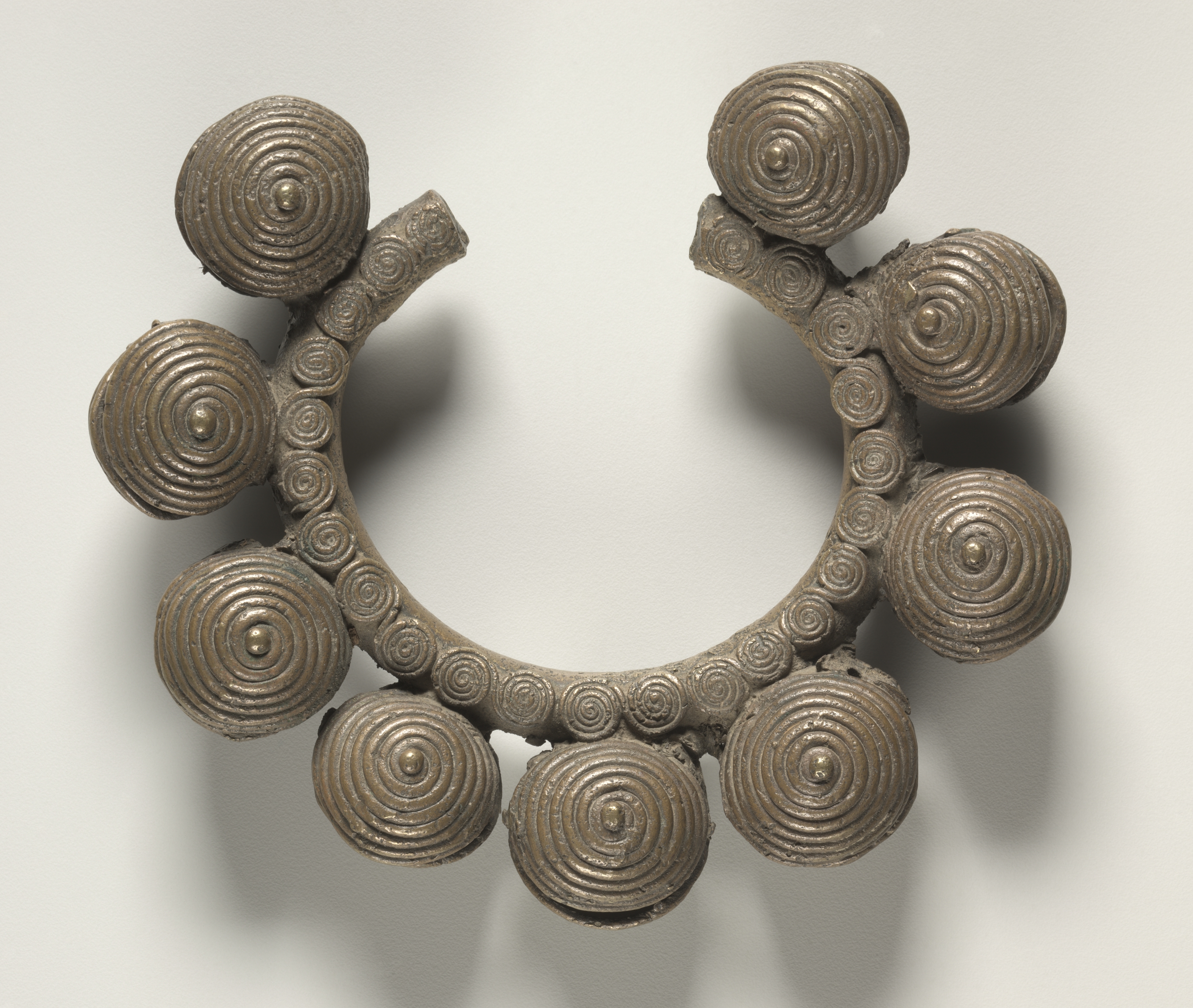The Cleveland Museum of Art
Collection Online as of April 19, 2024

Anklet
before 1927
Overall: 14.1 x 11.7 cm (5 9/16 x 4 5/8 in.)
Location: 108A Sub-Saharan
Did You Know?
From 1822–1847, the American Colonization Society colonized what became Liberia. Americo-Liberians (Congau) ruled until 1980. However, blacksmiths generally sourced brass for jewelry-making from kettles or bullets brought by nearby French colonials from the 1890s onwards.Description
Copper alloy bracelets and anklets historically signified a woman’s married status. They were bonded to her in life and removed following death. A blacksmith cast these heavy adornments. Given their weight, their owner couldn’t do domestic or farm work, showing others her privilege as a member of the elite leisure class. Slowed by this jewelry, her movements sent bells jingling in the hollow balls. Following a 1930s economic collapse, women stopped wearing the bracelets to take part in manual labor. At the same time, a national decree outlawed them; many were melted down.- 1927/28Collected by Willett Rankin Wilson in Liberia, 1927–281927/28–1982Willett Rankin Wilson, Lyndhurst, OH, given to the Cleveland Museum of Art1982–The Cleveland Museum of Art, Cleveland, OHProvenance Footnotes1 Memorandum from Virginia Crawford to Dr. Lee, 12-8-82, curatorial file2 Memorandum from Virginia Crawford to Dr. Lee, 12-8-82, curatorial file3 The Bulletin of the Cleveland Museum of Art, 1984, p. 76
- Arts of Africa: Gallery Rotation (African art rotation). The Cleveland Museum of Art (organizer) (December 10, 2021-July 2, 2023).
- {{cite web|title=Anklet|url=false|author=|year=before 1927|access-date=19 April 2024|publisher=Cleveland Museum of Art}}
Source URL:
https://www.clevelandart.org/art/1982.341.2